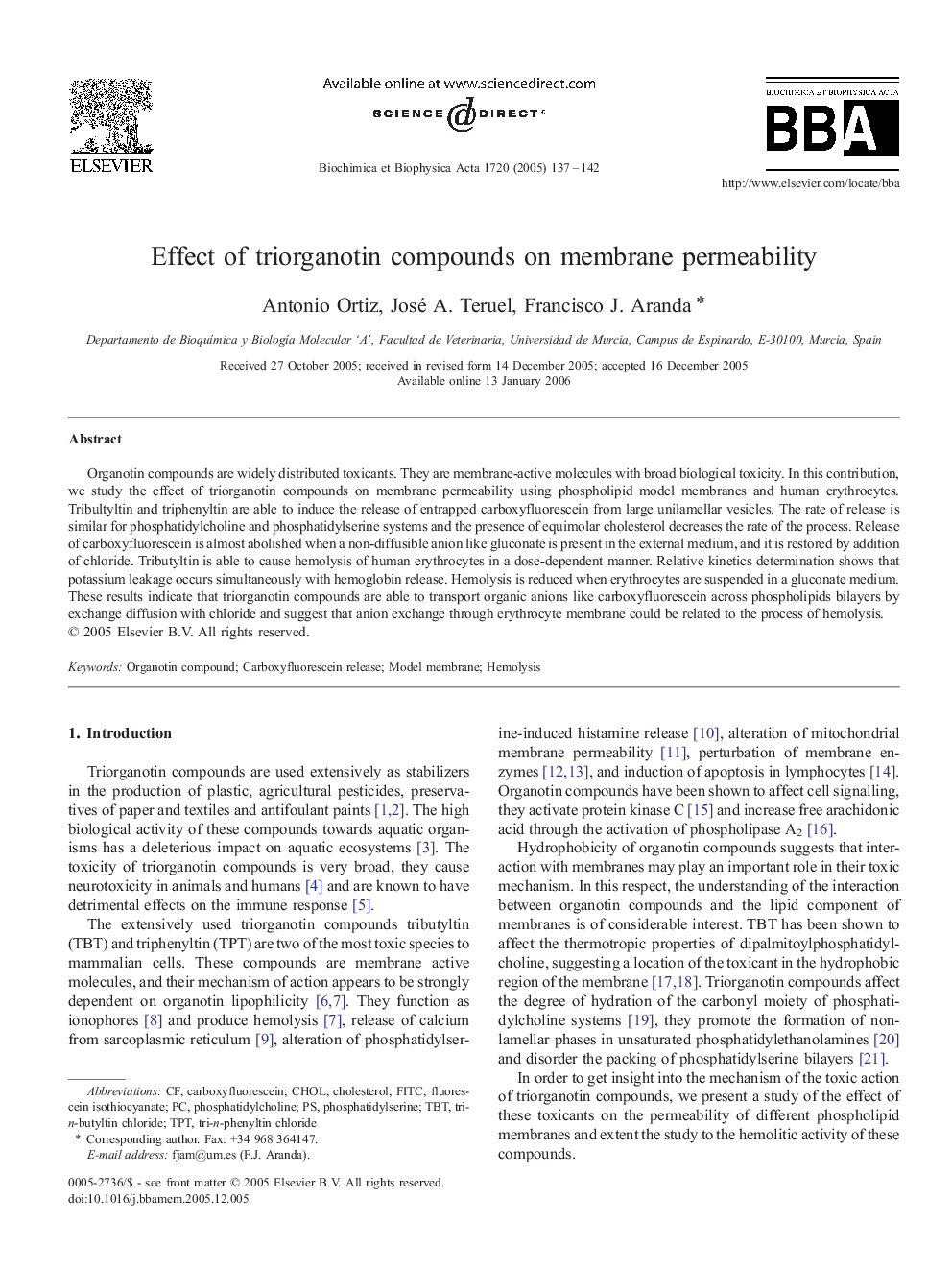| Article ID | Journal | Published Year | Pages | File Type |
|---|---|---|---|---|
| 9885110 | Biochimica et Biophysica Acta (BBA) - Biomembranes | 2005 | 6 Pages |
Abstract
Organotin compounds are widely distributed toxicants. They are membrane-active molecules with broad biological toxicity. In this contribution, we study the effect of triorganotin compounds on membrane permeability using phospholipid model membranes and human erythrocytes. Tribultyltin and triphenyltin are able to induce the release of entrapped carboxyfluorescein from large unilamellar vesicles. The rate of release is similar for phosphatidylcholine and phosphatidylserine systems and the presence of equimolar cholesterol decreases the rate of the process. Release of carboxyfluorescein is almost abolished when a non-diffusible anion like gluconate is present in the external medium, and it is restored by addition of chloride. Tributyltin is able to cause hemolysis of human erythrocytes in a dose-dependent manner. Relative kinetics determination shows that potassium leakage occurs simultaneously with hemoglobin release. Hemolysis is reduced when erythrocytes are suspended in a gluconate medium. These results indicate that triorganotin compounds are able to transport organic anions like carboxyfluorescein across phospholipids bilayers by exchange diffusion with chloride and suggest that anion exchange through erythrocyte membrane could be related to the process of hemolysis.
Keywords
Related Topics
Life Sciences
Biochemistry, Genetics and Molecular Biology
Biochemistry
Authors
Antonio Ortiz, José A. Teruel, Francisco J. Aranda,
